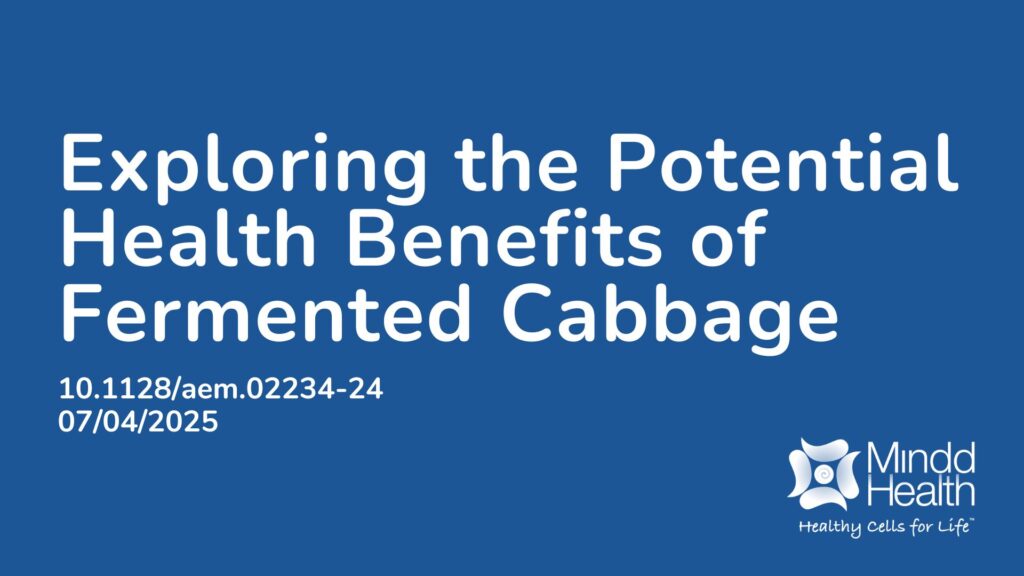Summary:
Fermented vegetables like cabbage (sauerkraut) have been eaten for thousands of years. The fermentation process helps preserve the food and makes it safer to eat by producing acids and other compounds. It also changes the nutrients in the cabbage, making them more beneficial. Recent studies in humans and animals suggest fermented vegetables may support health, but how is still not entirely understood. The environment of fermented cabbage encourages good bacteria, especially lactic acid bacteria (LAB), to grow. These bacteria break down sugars and release acids like lactic and acetic acid, which can help gut health, immune function, and metabolism. Fermentation also increases beneficial plant compounds in cabbage, like polyphenols, carotenoids, and other substances that may protect the gut lining and reduce inflammation. This study aimed to explore how fermented cabbage might protect the gut lining using a lab-grown gut model. Researchers compared raw and fermented cabbage, including versions made with a beneficial LAB strain called Lactiplantibacillus plantarum. They found that fermented cabbage, but not raw cabbage, helped protect gut cells from damage caused by inflammatory chemicals. Lab tests showed fermented cabbage had more helpful compounds like lactic acid, D-PLA, ILA, and others, which may help explain some of the gut health benefits seen with fermented foods. Overall, this study adds to the evidence that fermentation can boost the gut-supporting properties of cabbage and that certain compounds made during fermentation may play a role in protecting the gut barrier.
Abstract:
Fermented vegetables, such as fermented cabbage (sauerkraut), have garnered growing interest for their associations with a myriad of health benefits. However, the mechanistic details underlying the outcomes of consuming these foods require further investigation. This study examined the capacity of soluble metabolites in laboratory-scale and commercial-fermented cabbage to protect against disruption of polarized Caco-2 monolayers by interferon gamma (IFN-γ) and tumor necrosis factor-alpha (TNF-α). Laboratory-scale ferments (LSF) were prepared with and without the addition of Lactiplantibacillus plantarum NCIMB8826R (LP8826R) and sampled after 7 and 14 days of incubation. Trans-epithelial electrical resistance (TER) and paracellular permeability to fluorescein isothiocyanate (FITC)-dextran revealed that fermented cabbage, but not raw cabbage or brine, protected against cytokine-induced damage to the Caco-2 monolayers. Barrier-protective effects occurred despite increased IL-8 production following cytokine exposure. Metabolomic analyses performed using gas and liquid chromatography resulted in the identification of 149 and 333 metabolites, respectively. Significant differences were found between raw and fermented cabbage. LSF metabolomes changed over time, and the profiles of LSF with LP8826R best resembled the commercial product. Overall, fermentation resulted in lower carbohydrate and increased lactic acid, lipid, amino acid derivative (including D-phenyl-lactate [D-PLA], indole-3-lactate [ILA], and γ-aminobutyric acid [GABA]), and phenolic compound concentrations. Lactate, D-PLA, and ILA tested individually and combined only partially protected against cytokine-induced TER reductions and increases in paracellular permeability of Caco-2 monolayers. The findings show that intestinal barrier-protective compounds are consistently enriched during cabbage fermentations, irrespective of the scale or microbial additions, which may contribute to the health-promoting potential of these foods.
Article Publication Date: 07/04/2025
DOI: 10.1128/aem.02234-24



